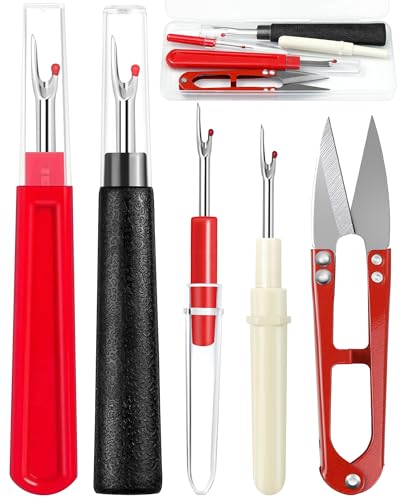Whether you’re diving into crafting, sewing, or any creative hobby, a cutting mat becomes your best friend. It protects your workspace and helps you achieve clean, accurate cuts every time you work on your projects.
But with so many options out there, choosing the right cutting mat can feel overwhelming. Size, material, grid patterns – all these factors play a role in making your projects smoother and more enjoyable. Let’s explore what makes a cutting mat essential and how you can pick the perfect one for your needs.
What Is a Cutting Mat
A cutting mat serves as a protective surface for your workspace during crafting projects. It prevents damage to your table or desk while ensuring clean, precise cuts. Cutting mats come in various materials, including self-healing vinyl, which absorbs knife impacts and maintains a smooth surface. Sizes range from small, portable options measuring 12″x18″ to large mats up to 24″x36″, accommodating different project dimensions. Grid patterns on cutting mats aid in measuring and aligning materials accurately. Features such as non-slip bases keep the mat steady, enhancing safety and efficiency during your creative tasks.
Types Of Cutting Mats
Cutting mats come in various types suited for different crafting needs. Understanding each type helps you choose the right one for your projects.
Self-Healing Cutting Mats
Self-healing cutting mats maintain a smooth surface by absorbing knife cuts, extending the mat’s lifespan. They are ideal for sewing, embroidery, and quilting, allowing multiple cuts without visible marks. Look for mats with a thickness of at least 2mm to prevent blade damage and ensure durability.
Grid Cutting Mats
Grid cutting mats feature printed measurement lines for precise cutting and measuring. They support accurate alignment for knitting patterns, paper crafts, and fabric cutting. Choose mats with clear, printed grids in both inches and centimeters to facilitate versatile project measurements. Some mats include additional markings like triangle indicators for angle cuts, enhancing functionality for complex designs.
Key Features To Consider
Choosing the right cutting mat enhances your crafting experience by providing precision and durability. Focus on size, thickness, and material quality to find the perfect mat for your projects.
Size And Thickness
Selecting the appropriate size and thickness ensures your mat meets your crafting needs.
- Size Options: Common sizes include 12×18 inches, 18×24 inches, and 24×36 inches. Choose based on your workspace and project dimensions.
- Thickness Standards: Mats range from 1mm to 5mm thick. Opt for at least 2mm to withstand frequent cutting and provide stability.
- Portability Factors: Larger mats offer more workspace, while smaller ones are easier to store and transport.
Material Quality
High-quality materials extend your mat’s lifespan and improve cutting accuracy.
- Self-Healing Vinyl: Absorbs knife cuts, maintaining a smooth surface for precise cuts. Ideal for repetitive use in sewing and embroidery.
- Surface Durability: Look for mats that resist staining and warping. Reinforced edges prevent fraying and extend the mat’s usability.
- Non-Slip Bases: Ensure the mat stays in place during use, enhancing safety and cutting precision.
| Feature | Description |
|---|---|
| Size Options | 12×18″, 18×24″, 24×36″ |
| Thickness | 1mm to 5mm, recommend ≥2mm |
| Material | Self-healing vinyl, durable surfaces |
| Additional | Non-slip bases, reinforced edges |
How To Choose The Right Cutting Mat
Selecting the right cutting mat involves evaluating size, thickness, and material quality. Here’s how to make the best choice:
Size
Choose a mat size that matches your project needs. Common options include:
- 12×18 inches: Ideal for small crafts like card making and detailed embroidery.
- 18×24 inches: Suitable for medium projects such as quilting layouts and fabric cutting.
- 24×36 inches: Best for large projects, including multiple fabric layers and extensive paper crafts.
Thickness
A mat’s thickness affects its durability and stability. Consider the following options:
| Thickness (mm) | Benefits |
|---|---|
| 2 | Provides stability for most crafting tasks. |
| 3 | Offers enhanced durability for heavy use. |
| 4 | Ideal for high-frequency cutting and thick materials. |
Material Quality
High-quality materials ensure longevity and precision. Focus on these features:
- Self-healing vinyl: Absorbs knife cuts, maintaining a smooth surface for accurate cuts.
- Non-slip base: Keeps the mat in place during use, enhancing safety and efficiency.
- Reinforced edges: Protect against wear and tear, extending the mat’s lifespan.
Ensure the mat includes clear grid patterns in both inches and centimeters, with additional markings for angle cuts to support complex designs.

Maintenance And Care Tips
Proper maintenance extends your cutting mat’s lifespan and ensures optimal performance. Follow these tips to keep your mat in top condition:
Clean Regularly
- Wipe Surface: Use a damp cloth to remove residue after each project.
- Mild Soap: For deeper cleaning, apply mild soap and warm water.
- Dry Completely: Allow the mat to air dry to prevent warping.
Prevent Damage
- Use Appropriate Tools: Utilize sharp blades to avoid unnecessary wear.
- Avoid Excessive Pressure: Press lightly to maintain the mat’s self-healing properties.
- Rotate Usage: Shift cutting areas to distribute wear evenly.
Proper Storage
- Flat Surface: Store the mat on a flat surface to prevent bending.
- Protective Cover: Use a mat cover to shield from dust and spills.
- Avoid Direct Sunlight: Keep away from sunlight to prevent discoloration and weakening of materials.
Periodic Inspection
- Check for Wear: Regularly examine the mat for deep cuts or tears.
- Replace When Needed: Swap out mats showing significant wear to maintain precision.
Additional Care Tips
| Tip | Description |
|---|---|
| Non-Slip Base | Ensure the mat’s base remains non-slip by cleaning regularly and avoiding oily surfaces. |
| Reinforced Edges | Inspect edges for fraying and reinforce if necessary to prevent tearing. |
| Grid Alignment | Verify grid lines remain clear; clean gently to maintain visibility for accurate cuts. |
Following these maintenance and care practices keeps your cutting mat effective and reliable for all your sewing, embroidery, knitting, and crafting projects.
Conclusion
Finding the perfect cutting mat makes all the difference in your crafting projects. It’s not just about protection but also about precision and ease. By considering size thickness and material you’ll set yourself up for success every time you create. Taking good care of your mat ensures it stays reliable and smooth for years to come. Embrace the right tools and watch your creativity flourish
Happy crafting!

















